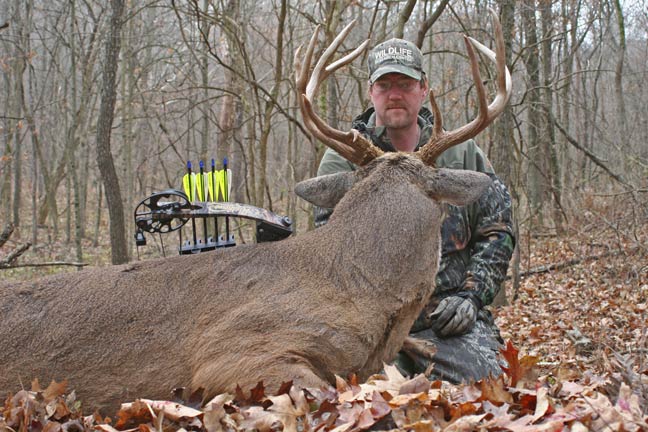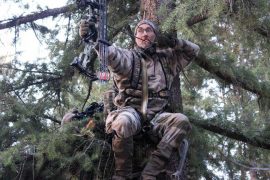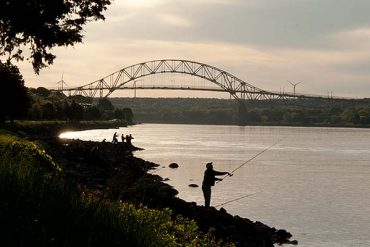My heart sank, as the young doe the triple-beamed monster was following tried cutting left, when I so desperately wanted her to cut right. Just that fast, it appeared the doe that was bringing Mr. Big into my life was about to tear him away, when all I needed was a few more steps in my direction.
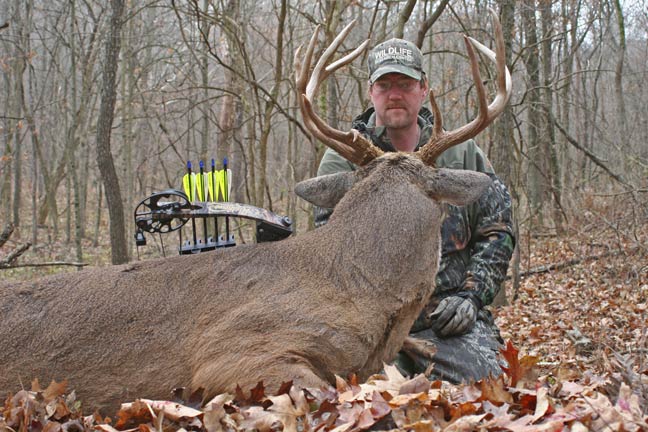
Luckily, Mr. Big didn’t seem to care much for what his estrus doe wanted. He was going to get a drink at the water hole my stand covered, and she was coming with him whether she wanted to or not. Hooking around her, he tined her rather forcefully in the side, redirecting her to the water hole. Moments later, I was shaking like a leaf, trying to compose myself, before daring to climb down and walk over to where an Easton my Mathews had sent through his boiler room had laid him to rest.
Without a doubt, studying the topo map the previous winter was what alerted me to the potential stand site. Located where the three tapering points met, it formed a busy intersection for bucks going from, to and between the higher ridges above. However, it was the early-April foot scouting trip that sealed the deal. With various-sized beds dotting the high grounds, and rubs and scrapes smattering about those tops, it was obvious that this was as busy an intersection as I first suspected. The scrape marking the intersection, approximately the size of the hood of a truck, only cemented in my mind that this was THE spot to be.
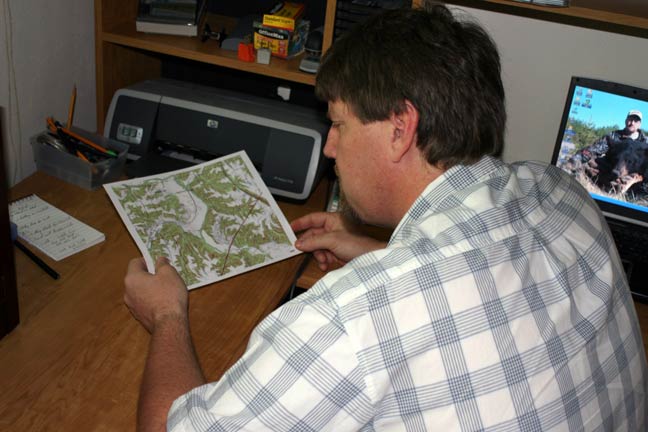
As technology increases, foot scouting is seemingly becoming a less and less important part of filling buck tags. Between up to date aerial photography, readily available topo maps and trail cams, we can study our grounds more thoroughly than ever before.
That said, foot scouting is still mission critical. Frankly, it is what I rely on to confirm or disprove the potential stand sites I find on photos and topos, as well as banking on it alerting me to key info one can not find on photos and topos. Here’s what to look for when hitting the woods this spring.
Unraveling the Rut
Starting off with a bang, the biggest payoff spring scouting provides is the road map for the local bucks’ rutting patterns. Make no mistake about it. For as much as we’re told that you can’t pattern rutting bucks, that’s pure malarkey.
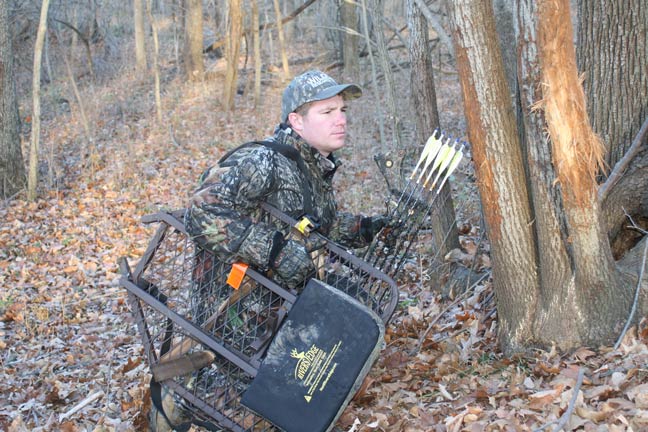
Rutting bucks have a pattern they loosely follow for finding estrus does every bit as much, if not more so, than a typical buck’s feeding pattern can be ID’d in early or late season. After all, a deer’s “patterns” are nothing more than unearthing one of more things they have the tendency of doing. By definition, tendencies mean that they won’t always do it and there will be exceptions. A buck feeding somewhat regularly on a specific food source isn’t any more of a pattern than a buck somewhat regularly checking the same doe bedding area for estrus does.
Before spring bloom occurs in earnest, most all of the previous year’s most regularly used scrapes — the ones we really care about — and virtually every rub stands out like a sore thumb. No, bucks aren’t rubbing and are very rarely pawing the dirt at scrapes in spring. However, before the new growth of grass and weeds swallow the scrapes or leaf out makes seeing last year’s rubs harder, spring provides us the opportunity to study the…

